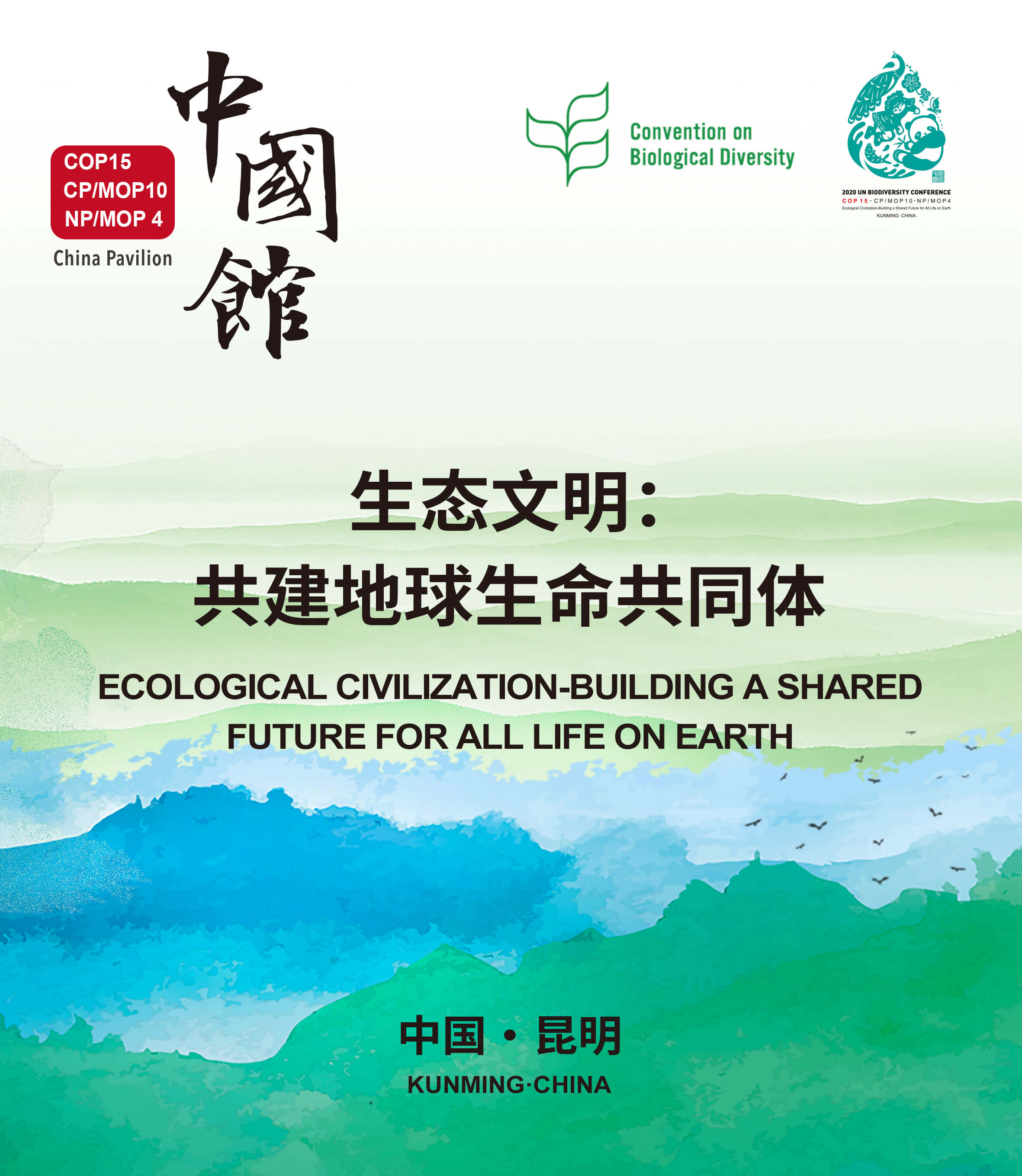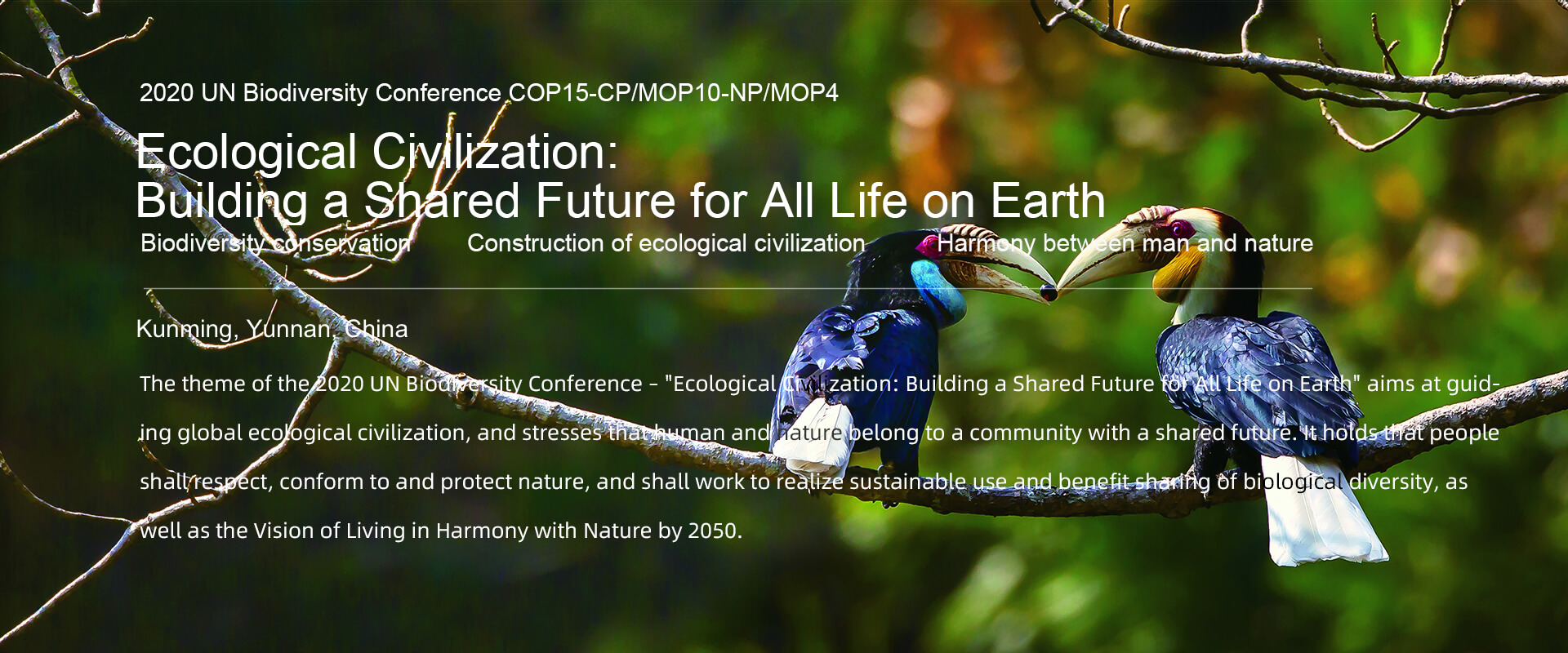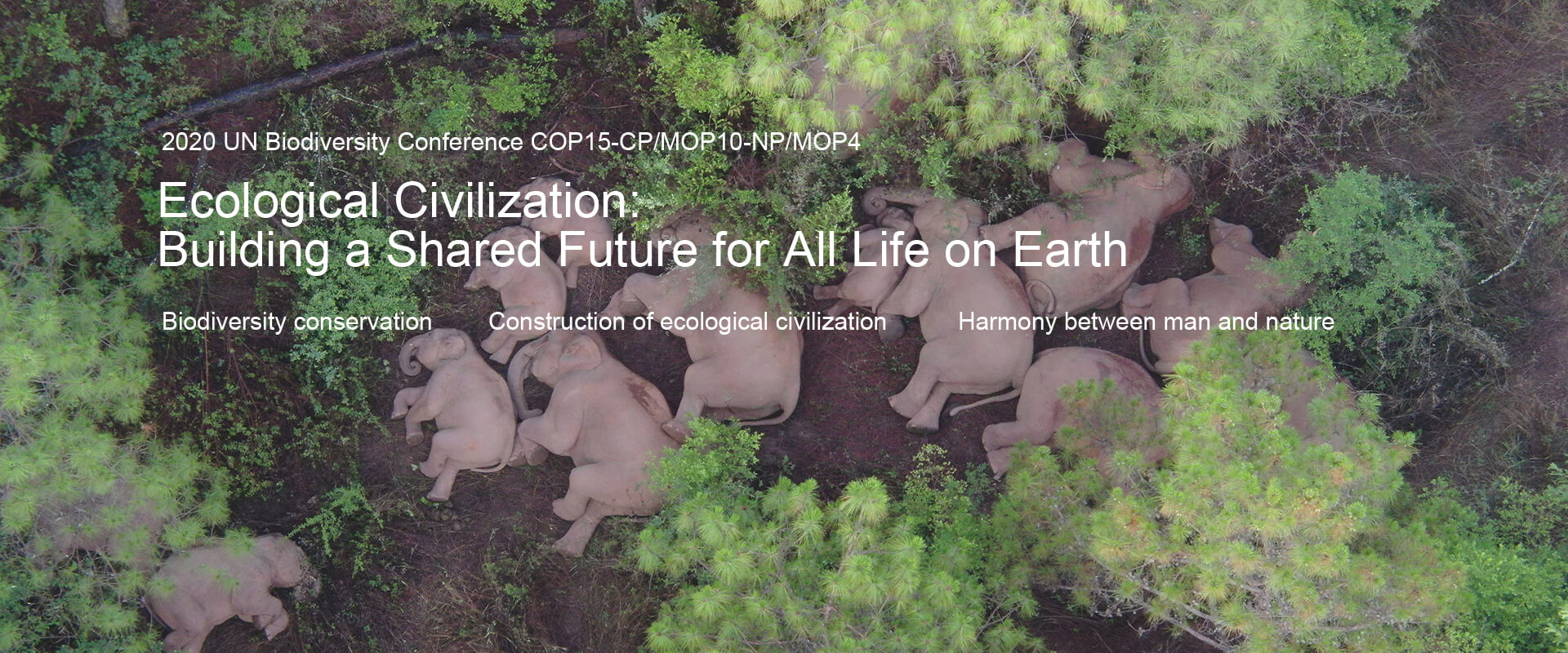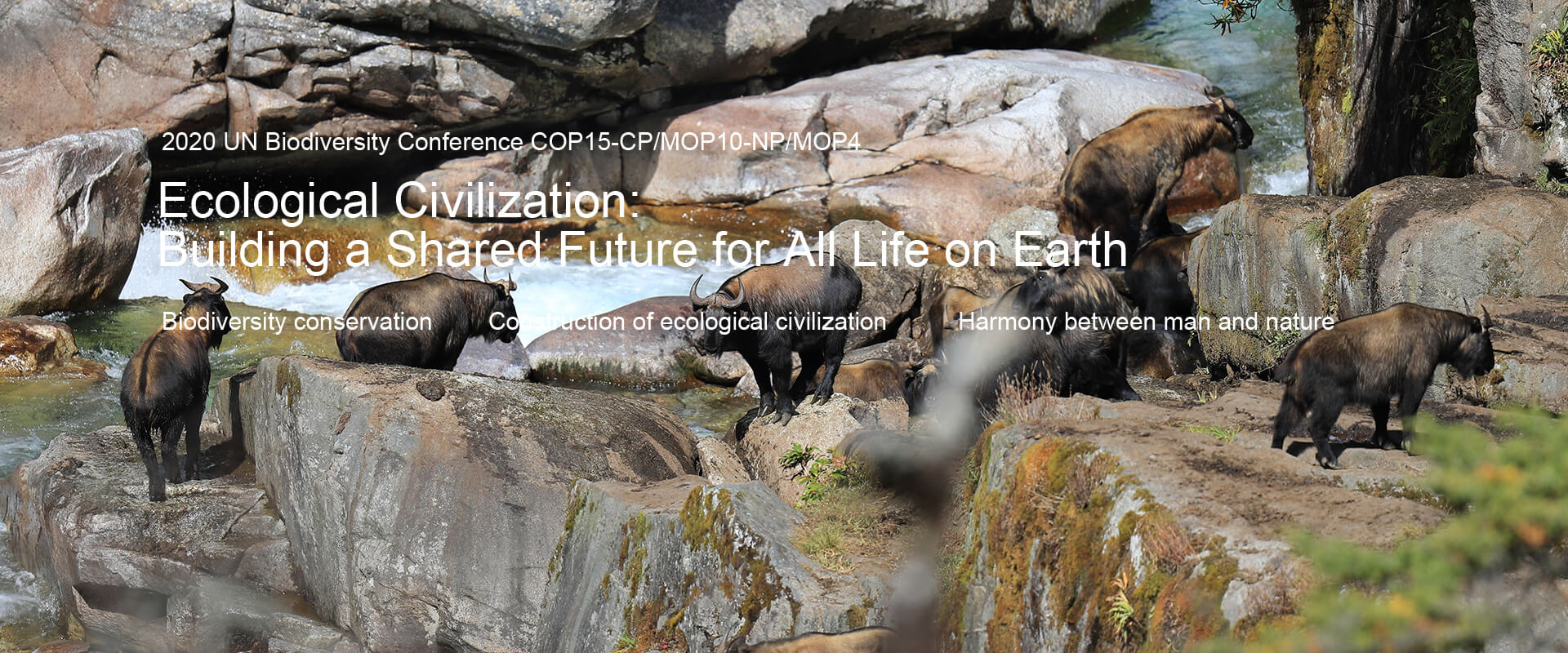COP15 meeting schedule
Fifteenth meeting of the Conference of the Parties to the Convention on Biological Diversity

Sharm El-Sheikh to Kunming Action Agenda for Nature and People
China Pavilion
In accordance with the exhibition concept of "Reciprocity, Co-existence and Co-prosperity of all living things" and the theme of the conference "Ecological Civilization: Building a Shared Future for All Life on Earth", the exhibition shows China's rich and unique biodiversity, shares China's ideas and practical experience in building an ecological civilization and protecting biodiversity, and conveys China's willingness to work with all parties to jointly pursue a path for building a shared future for all life on earth.
The online exhibition includes the national exhibition area, the local exhibition area and the Yunnan exhibition area. The exhibition aim to promote Xi Jinping Thought on Ecological Civilization, and to introduce China's solution and wisdom in ecological civilization and biodiversity conservation. The local exhibition area and the Yunnan exhibition area showcase the highlights of ecological civilization construction and biodiversity conservation achievements in different localities in China.

Ecological civilization Forum
The 15th CBD Mascot Theme Ecological Civilization
Building a Shared Future for All Life on Earth

Duoduo
(a blooming camellia is the city flower of Kunming.)

Yangyang
(a giant panda as China's treasure is a messenger of friendship.)

Xinxin
(a cute girl represents the hope of all peoples on Earth.)

Shengsheng
(a beautiful peacock implies good luck.)

Wuwu
(a smiling golden monkey greets guests from afar.)
The names of the five mascots are pronounced like "biodiversity" in Chinese and they symbolize jewels of China's biodiversity. The design is a composite of the animals (peacock, golden monkey, panda and butterfly), plants (camellia, peony and bamboo), microorganism (Ganoderma Lucidum) and humanity (ethnic girl). It represents the biological biodiversity and the harmony between man and nature. The ardent and vibrant design is emblematic of people's ambition for building ecological civilization and a shared future for all life on Earth!
Yun Nan China
Yunnan Province, briefly named as “Dian” or “Yun”, covers a land area of 394,000
square kilometers, accounting for about 4.1% of China's total land area and ranking 8th among the country’s
provinces, municipalities and autonomous regions. It has 129 counties, county-level cities and districts under
the jurisdiction of 16 prefectures and prefecture-level cities. Yunnan adjoins Guizhou Province and Guangxi
Zhuang Autonomous Region in the east, Sichuan Province in the north, and Tibet Autonomous Region in the
northwest. Bordering Myanmar in the west, Laos and Vietnam in the south, Yunnan has a land border of 4,060
kilometers, one of the longest in China.Located at the junction of China and Southeast Asia and South Asia,
Yunnan is the window and gateway of China’s opening up to the aforesaid two Asian regions. It is linked with
Myanmar, Laos, Thailand, Cambodia and Vietnam by the Lancang-Mekong River, and close to countries such as
Malaysia, Singapore, India and Bangladesh. Its favorable geographical position has made Yunnan one of the
provinces with the most neighboring countries in China. The noted Stilwell Road and Hump Route used to pass
through Yunnan.By 2019, Yunnan had a permanent population of 48.583 million. It has the largest number of
ethnic groups in China. In addition to the Han, the province has 25 ethnic minority groups such as the Yi,
Hani, Bai, Dai, Zhuang, Miao, Hui and Lisu, each with a population of over 6,000. Among these ethnic minority
groups, 15 are unique to Yunnan and they are the Hani, Bai, Dai, Lisu, Lahu, Wa, Naxi, Jingpo, Bulang, Pumi,
Achang, Nu, Jinuo, De’ang and Dulong, each with a population accounting for more than 80% of the ethnic
group's total population in China.The landforms of Yunnan are dominated by mountains and plateaus, which
amount to 370,000 square kilometers and account for 94% of the province’s total land area. Yunnan has huge
elevation differences. Its highest point is the 6,740-meter-high Kawakarpo peak of Meili Snow Mountain (part
of the Nujiang Moutains) in Deqin County, while its lowest point, only 76.4 meters above sea level, is at the
confluence between the Nanxi River and Red River in Hekou County which borders Vietnam. It’s interesting to
note that the distance between the two places is less than 900 kilometers, but their elevation difference is
more than 6,000 meters.The subtropical plateau monsoon climate is the main climate type in Yunnan. Weather
varies in different regions of the province, with obvious distinction between dry and wet seasons, and
temperature changes with altitude. The northwest Yunnan features a frigid climatic pattern, with long winter,
short spring and autumn and no summer. The eastern and central parts enjoy a temperate climate, mild as spring
except on chilly rainy days. The south and southwest Yunnan lies in low and hot valley areas, some of which
are in the tropical area south of the Tropic of Cancer. As a result, the weather is hot all year round, and
only rainfall brings some autumn-like coolness. In some areas with large elevation differences in Yunnan, one
can experience frigid, temperate and tropical weather within a short distance because temperature changes
drastically with elevation.
Yunnan is at the intersection of “Mountains of Southwest China”, “East Himalayas”
and “India-Myanmar”, three of the 36 global hot spots for territorial biodiversity that are both rich with
life and at high risk of destruction. It is the province with the richest biodiversity in China and home to
the origin and differentiation of many species. Yunnan occupies only 4.1% of the country's land area, but it
has all the types of ecosystems on Earth except ocean and desert, and the number of species of each genus here
approaches or exceeds half of the national total. In view of its vital role in biodiversity conservation in
China and the whole world, Yunnan is crowned as “the Kingdom of Animals”, “the Kingdom of Plants” and “the
Garden of the World”.Yunnan abounds in energy resources. It enjoys favorable conditions for hydropower
development and promising prospects for developing geothermal, solar, wind and biological energy. In China,
Yunnan is only second to Tibet in solar energy resources, and the province also leads in the shares of green
energy in total installed generating capacity, non-fossil energy in total consumption of primary energy, and
clean energy in total electricity consumption.Yunnan has actively carried out afforestation and environmental
protection. In 2019, 263,700 hectares of forests were planted by manpower, and 53,200 hectares of forests were
protected by restricting access to mountain areas. By the end of 2019, Yunnan's urban sewage treatment plants
registered a daily treatment capacity of 3.4625 million cubic meters, its urban sewage treatment rate was 94%,
and its greening rate of urban built-up areas reached 33.8%.Yunnan is committed to biodiversity conservation.
In 2018, it issued the Regulations of Yunnan Province on Biodiversity Conservation, the country's first local
regulations on biodiversity protection. It has taken the lead in China in publishing Species List of Yunnan
Province (2016 Edition), Species Red List of Yunnan Province (2017 Edition), Ecosystem List of Yunnan Province
(2018 Edition) and Invasive Alien Species List of Yunnan Province (2019). In-situ and near-situ protection
bases for plant species with extremely small populations have been built in southeast and west parts of the
province, and in-situ protection, breeding and reintroduction of Cycas has been carried out. The protection
achievements are recorded in the book of Research and Protection of Plant Species with Extremely Small
Populations in Yunnan Province. The province has carried out in-situ conservation for 64 plant species with
extremely small populations, such as Manglietiastrum sinicum and Cycas diannanensis. Among them, over 100,000
plants of 61 species are under ex-situ protection and over 15,000 plants of 20 species have been reintroduced
back into their wild habitats. In addition, 88% of wildlife species under state protection are conserved. In
2019, Yunnan started to prepare for the 15th meeting of the Conference of the Parties to the Convention on
Biological Diversity (CBD COP15)Aiming to become the most beautiful province and a pioneer in building
ecological civilization in China, Yunnan has fully advanced the building of ecological civilization
demonstration zones, and the practice and innovation bases for implementing the development concept of “lucid
waters and lush mountains are invaluable assets”. Up to now, the province has established 10 national
ecological civilization demonstration prefectures (cities and counties), five practice and innovation bases
for implementing the development concept of “lucid waters and lush mountains are invaluable assets”, and one
national pilot demonstration zone for developing green economy.





























